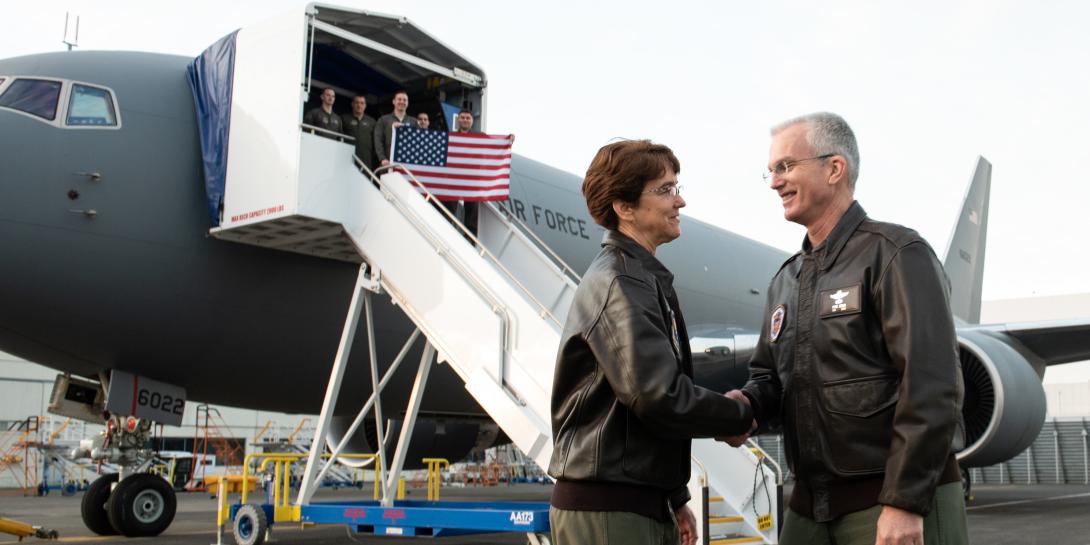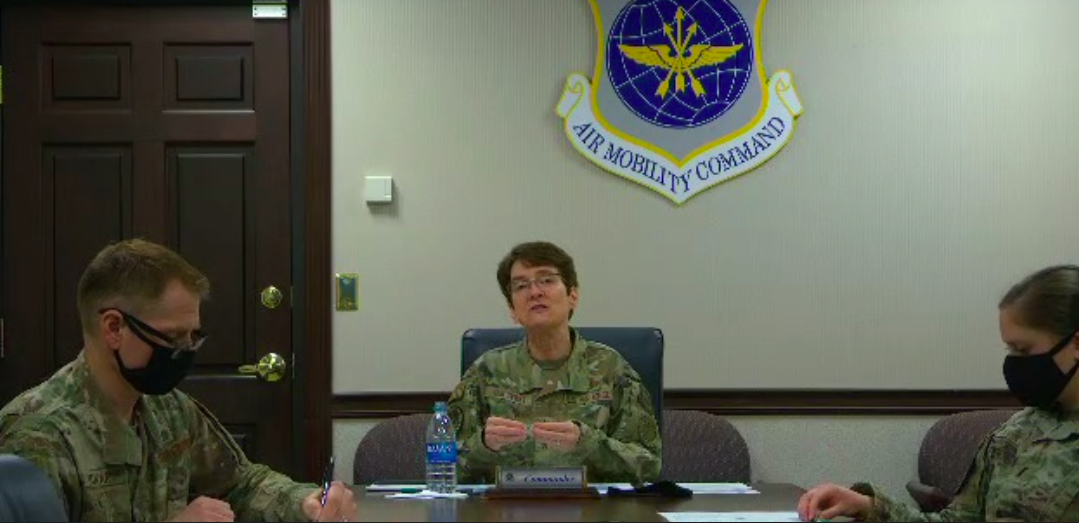The Growing Communications Role of the Tanker
The U.S. Air Force plays a vital role to the rest of the U.S. military in providing airlift response, mid-air refueling, aero-medical evacuation and global air mobility support for military operations, as well as during humanitarian crises. To perform these missions, the Air Force depends on a variety of tanker and cargo aircraft including the KC-135, KC-10 and KC-46. However, in addition to these more traditional roles for the air fleet, the service is employing the aircraft more and more as flying communications nodes for the growing and ever-important mission of enabling Joint All Domain Operations (JADO) and Joint All Domain Command and Control, or JADC2.
With the aging KC-135 and KC-10 aircraft, the service is progressing to the KC-46 Pegasus platform. The Air Force currently has in hand 42 such planes stationed at four Air Force bases, and has a contract with Boeing for another 179, reported Gen. Jacqueline Van Ovost, USAF, commander, Air Mobility Command, Scott Air Force Base, Illinois, which provides the essential missions to the U.S. military. Gen. Van Ovost spoke to reporters virtually on February 1 during a Defense Writers Group forum hosted by George Washington University Professor David Ensor, head of the Project for Media and National Security.
“We are accelerating change by moving to the KC-46 platform,” Gen. Van Ovost stated. “That platform, when fully developed and capable, it's going to give us a lot of advantages over our current legacy fleet, especially with respect to its agility, the multiple missions it can do, and its ability to have additional battle space awareness, which we don’t have right now.”
The commander emphasized the benefits the aircraft will offer as far as mobile communications and data—functions outside the more traditional roles of airlift and refueling capabilities. “It [has an] ability to support the joint force both as a communications node and potentially as a forward data node, which is important because we're always going to be in the area when combat operations exist.”
As the Air Mobility Command presents air refueling and airlift assets in forward areas during competition or full conflict, the shift to the nontraditional roles can occur relatively easily, Gen. Van Ovost said. “We've done this work by simply a flip of a switch on the airplane where we can be a relay node, where we can do this edge processing for a fourth or fifth gen [generation wireless network] and frankly we've done even recently with the KC-46. We have been the translator, if you will, to move data between the F-22 and F-35 and the X-58 Valkyrie, the unmanned combat vehicle. That is simply being within range and having line-of-sight and beyond-line-of-sight capabilities, to do that translator work out there in the field. I don't see it as an either-or role. I see it as both when it comes to the non traditional mission sense.”
If an airplane has the necessary communications backbone and infrastructure, the general continued, the command can easily add nodes or communications pods. “We are working on that,” she noted. “And not every airplane has to have a pod perhaps, it depends on where they are going to be in the battle space, but this is how the Joint Force gets better because we are increasing our capabilities and we are leaning into it.”
Based partly on the commercial version of Boeing’s 767 plane, the KC-46 Pegasus has had problems in manufacturing, which has impacted the timeline of the Air Force’s planned roll out of the plane. “They are not fully operationally capable because there are some deficiencies,” Gen. Van Ovost noted. “And these deficiencies, we are getting after with Boeing.”
As of the end of last week, the Air Force had eliminated two of the six major deficiencies—considered Category One problems, or the most severe deficiencies of the program. Those two discrepancies were associated with maintenance of the auxiliary power unit and some associated component pieces, the general observed. Still a concern is the adequacy of the remote visual system, or RVS, and the operation of the telescoping boom for refueling. “Those are the ones that really stop us from full operational capability,” Gen. Van Ovost said.
Boeing is going to field the airplane with a fixed RVS at their cost, the commander continued. “The remote visual system, RVS 2.0, we expect to have a working copy up and flying in late 2023 but we're doing everything we can to accelerate that,” she said. “We've done some down selects on the design and we are very happy between our engineers and Boeing engineers on the design.”
Meanwhile, the command is using the wait time for its crews to learn more about the airplane and the associated new concepts of operations (CONOPS), including flushing out the communications node role and how to employ the Advancement Battle Management System for JADC2, the general said.
“We're taking the time now with our crews who are transitioning into this airplane to learn more about the aircraft and to learn about the new CONOPS that we're going to be executing in that airplane so that we can become more capable for the Joint Force,” Gen. Van Ovost stated. “[We] are working on things like tactical datalink and experimenting with the Advanced Battle Management System on ramps for all the C2 nodes and data at the edge, forward processing at the edge. I have got to be careful that I keep the capacity necessary to compete in today's environment.”
The commander also is keeping crews on the operationally capable legacy tankers, including the KC-135s and the KC-10s, so that they can continue to fly missions, she shared. The Air Force is looking to rely on and fund more of the service’s Guard and Reserve crews—which already make up about 55% of their tanker capacity—as the service makes the transition to the KC-46 through fiscal year 2024.
“This is the way that we're accelerating change,” the commander explained. “We are getting after the capabilities we need to survive tomorrow by taking a little bit of risk in overall capacity in the near years.”





Comments